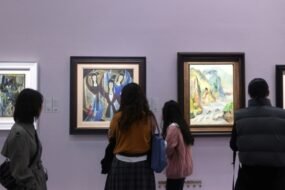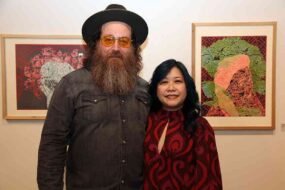My husband and I have a large drawing in our house that we affectionately call “Bun Bun.” Bun Bun is framed in simple black wood with pale green matting, which perfectly compliments the vintage patina of the paper he is drawn on. He is a charcoal rabbit, depicted in frantic strokes and has large startled eyes, like he has just been caught doing something naughty. He is adorable, filled with character, the kind of personality you can always invent a story around. Twelve years ago, when we were in our first stages of dating, we found him at a massive antique store in Stillwater, Oklahoma, leaning against the wall in its attic. We fell in love with him immediately. He was the first piece of art we bought together. Bun Bun has now traveled from his humble home in that dusty attic all the way to our beautiful living room in Dubai, where he proudly hangs. He cost $20, but his value to me — to us as a couple — is immeasurable.
Although I am fortunate enough to know a healthy amount of art history, I’ve always been attracted to art on instinct. Yet, I find the world of art collecting to be elitist and intimidating. This feeling has made me hesitate to truly enter that realm and begin investing in pieces for myself. In speaking to others, I found that this was a common feeling. Unless you’re born into it or have made it your life’s mission, the average person is often too overwhelmed by how vast, complicated, and expensive it can be to start an art collection, which is why, for this piece, we’ve tapped the experts: Syrian art collector Zina Khair, renowned gallerist Leila Heller, and professional art advisor Vanessa Fuchs.
Khair was born into the world of art, which was cultivated in her household because of a chance encounter. Decades ago, her father came across the artwork of Fateh Moudarres at the Librairie Universelle bookstore in Damascus, way before anyone knew who Moudarres was. He is now regarded as the father of the modern art movement in Syria. “In that bookstore, my father fell in love with Fateh’s work. It turns out that because of the proximity of the atelier of Fateh and my father’s office, they started a friendship, and my father began collecting his work.” Over time, Khair’s household amassed one of the biggest collections of Moudarres’ work in the world.
In 2012, the political situation in Syria forced the family to leave, not sure if they would ever be able to return. Khair and her husband and two daughters moved to Dubai, along with the family’s precious artworks and photo albums, while her parents moved to Paris. It took three years before Khair really settled into Dubai, and only then did she hang the paintings in her home, which is now a living gallery containing over 400 artworks by Syrian artists. Her home is simply breathtaking to behold; it is vibrant, colorful, eclectic, and thrumming with positive energy.
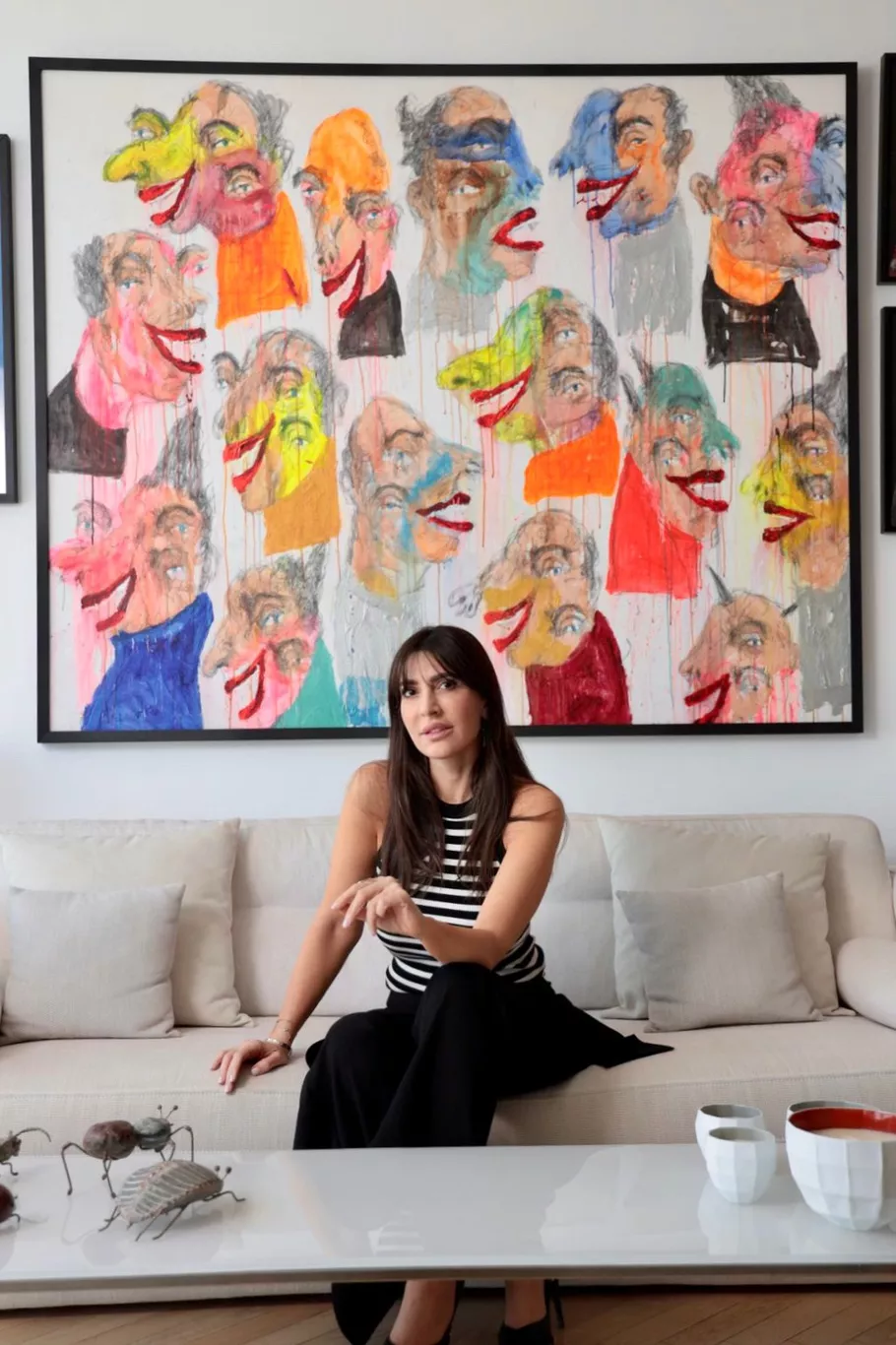
“In 2018, my connection to art became official,” she shares. She partnered with Ayyam Gallery and Christie’s to create a book featuring 86 pieces of Moudarres’ work, along with the only documentary ever made about the artist, which her father made. “It was a tribute to my father, and the first time my father saw the art in six years since leaving Syria,” she says. It was an emotional moment for the entire family and the beginning of Khair’s recognition as an authority on Syrian art.
For Khair, collecting art is not about earning a return on an investment. She does it for the pure love of the piece. “I never considered myself a collector,” she confesses. “Unfortunately, today, there is a certain agenda to look at [collecting] as purely for profit. I don’t want to be part of that.” Khair believes that art is accessible to anyone. “It is a universal language. There is no right or wrong way to respond to art,” she says. “You don’t need to understand art, you don’t have to have huge budgets, you don’t need to think of it as an investment. This is a sad idea. No one is to blame in thinking that way; it is the entire machine behind art that is to blame.”
Although, as an art advisor who seeks out pieces for her clients, Vanessa Fuchs is steeped in the world of art as an investment, she shares a similar sentiment. Fuchs was also raised in a household surrounded by art. Her great-grandmother, the famed fashion designer Nina Ricci, imparted a creative DNA to the family. Her grandfather on her father’s side is a major art collector who started Le Prix Marcel Duchamp with Centre Georges-Pompidou, and founded ADIAF, the Association for the International Diffusion of French Art. Her father and uncles worked at Nina Ricci, creating cosmetics, clothing, and haute couture. Her cousins in the south of France are in fragrance, while others have started chocolate factories. For her, a reaction to art is purely emotional. “Art is supposed to emulate life and cause a feeling, whether that’s happiness, sadness, or anger; it’s an emotion,” she says. “Art, in the capital sense, whether it’s literature, theater, or visual arts, teaches us to find solutions and be creative. It’s interesting because as we get older, we have less time to be creative. We don’t have time to sit and wonder anymore. Art makes life so much better and adds so much creativity to anyone’s life. It allows you to stop and wonder.”
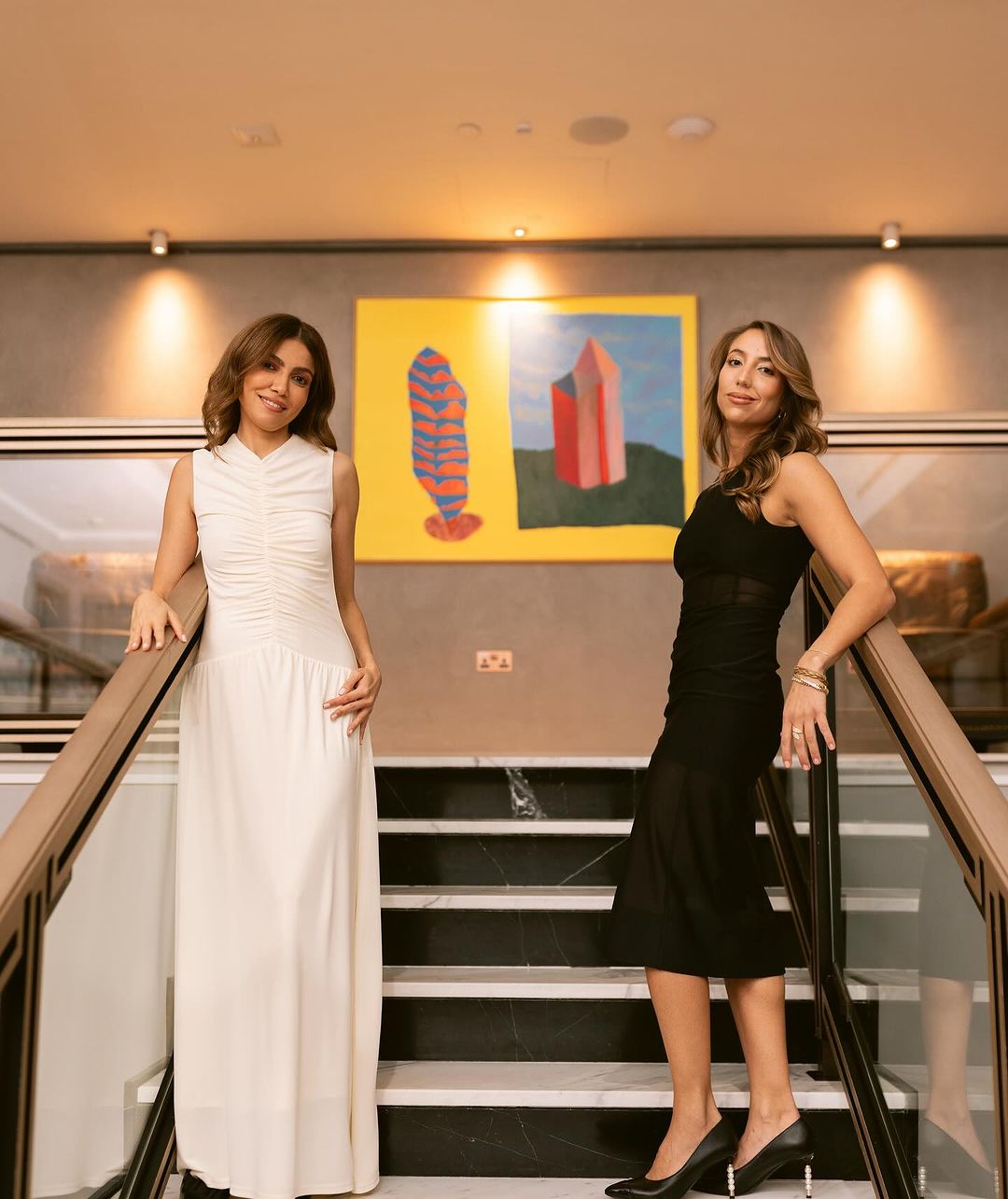
At the same time, Fuchs acknowledges that it can be intimidating to break into the art world as a patron, an enthusiast, or even just a casual bystander. “When I was interning at certain galleries, people would be scared to walk in. They’d ask, ‘Is it free?’ ‘Am I allowed in?’,” she shares. “You have to break down those barriers. Bring your best friend or significant other so you can talk about what you’re seeing, what you like or don’t like about it, and how it makes you feel. Before you buy anything, you first have to look.”
Leila Heller, the influential Persian gallerist and art collector, began her career in the US after fleeing Iran during the revolution in the 1970s. She built her knowledge base first by acquiring degrees in art history and museum management and then became part of the thrilling New York art scene in the 1980s, where she befriended the likes of Andy Warhol, Jean Michel Basquiat, Jeffrey Deitch, and Cy Twombly. Over the years, she has become a prominent voice for emerging artists from the Arab, African, Persian, and Asian worlds. Like our other subjects, Heller encourages learning and looking before making your first purchase. “I believe one should fall in love with the work they buy. I also believe in developing relationships with galleries that have a track record and are well established and buying from them. This way, you know the artists you buy will have an upward trajectory as the gallery cares about the careers of their artists,” she shares.
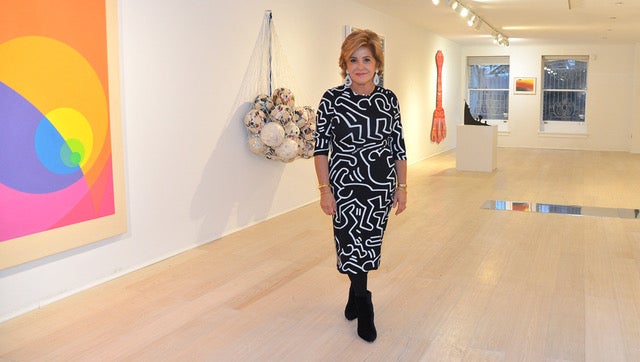
While you might just want to dive into the art world headfirst and skip the learning part, that’s where the joy of the experience can really be found. More importantly, it’s within this step that you’ll cultivate the most important aspect of art collecting: your own personal taste. “By exposure, little by little, you will create your own taste,” Fuchs says, “And then you’ll figure out what you want to be an ‘expert’ in.”
For instance, you might be drawn to contemporary abstract art like Mark Rothko or Piet Mondrian, or prefer the surrealists like Salvador Dalí or Joan Miró, or installation artists like Judy Chicago, or the narrative quilt-making of Faith Ringgold. You might prefer to explore only regional artists like the emotional paintings of Palestinian artist Sliman Mansour, sculptures of Emirati artist Sarah Al Mehairi, the striking land-based storytelling of Saudi artist Zahrah Al Ghamdi, or the whimsical print-making of Kuwaiti artist Thuraya Al-Baqsami. What you are drawn to as you explore is what will form the future of your art-collecting interests. Pay attention to the similarities and differences between what you like, explore the backgrounds of the artists, and investigate the political and economic climate in which each art piece was created. “With art it is so much about relationships, with the artist, galleries, advisors, collectors, journalists; there is a whole network that you can tap into here in the regional and internationally,” Khair shares. “But, me and my family have always collected Syrian art because it has such a rich and varied history, and it is so accessible.”

Once you have looked, explored, and developed your art interests, you might be ready to buy your first piece. Reputable galleries are a great place to start. And you don’t have to spend hundreds of thousands of dirhams to acquire something you love, as most galleries offer a range of price points. However, these prices are usually non-negotiable. “Discuss your budget with galleries up front,” Heller advises. “Galleries have a lot of costs and spend a lot on promoting and exhibiting. Always be respectful of this, but if you buy more than one work and become a regular customer of the gallery, they will recognize that and try to give you the best deal they can.”
Art advisors, like Fuchs, play an important role for a lot of collectors. They are constantly touring art fairs like Frieze, Basel, ARCO, ZONA MACO, and others to find the best pieces for their clients. Hiring a reputable art advisor to scout new pieces is an option many art collectors take. The secondhand or resale market is where some of the most important works in the art world are bought and sold, but Fuchs warns, “Art is not as liquid as most people think.” In other words, just because you buy a valuable piece from an auction house or a fellow collector doesn’t mean it will instantly be worth more money. “It’s like a stock; some values go up, and some go down,” Fuchs says. She believes there is an art to balancing what you collect because you love it and what you collect because you believe it’s a worthy investment.
Furthermore, when you’re buying a piece of art that was previously owned, certificates of ownership and provenance documents are extremely important. They prove the authenticity and history of the piece. Was it ever loaned to a museum? Was it owned by a prominent family? Was it part of a well-known gallery exhibition? Was it featured in a documentary about the artist?
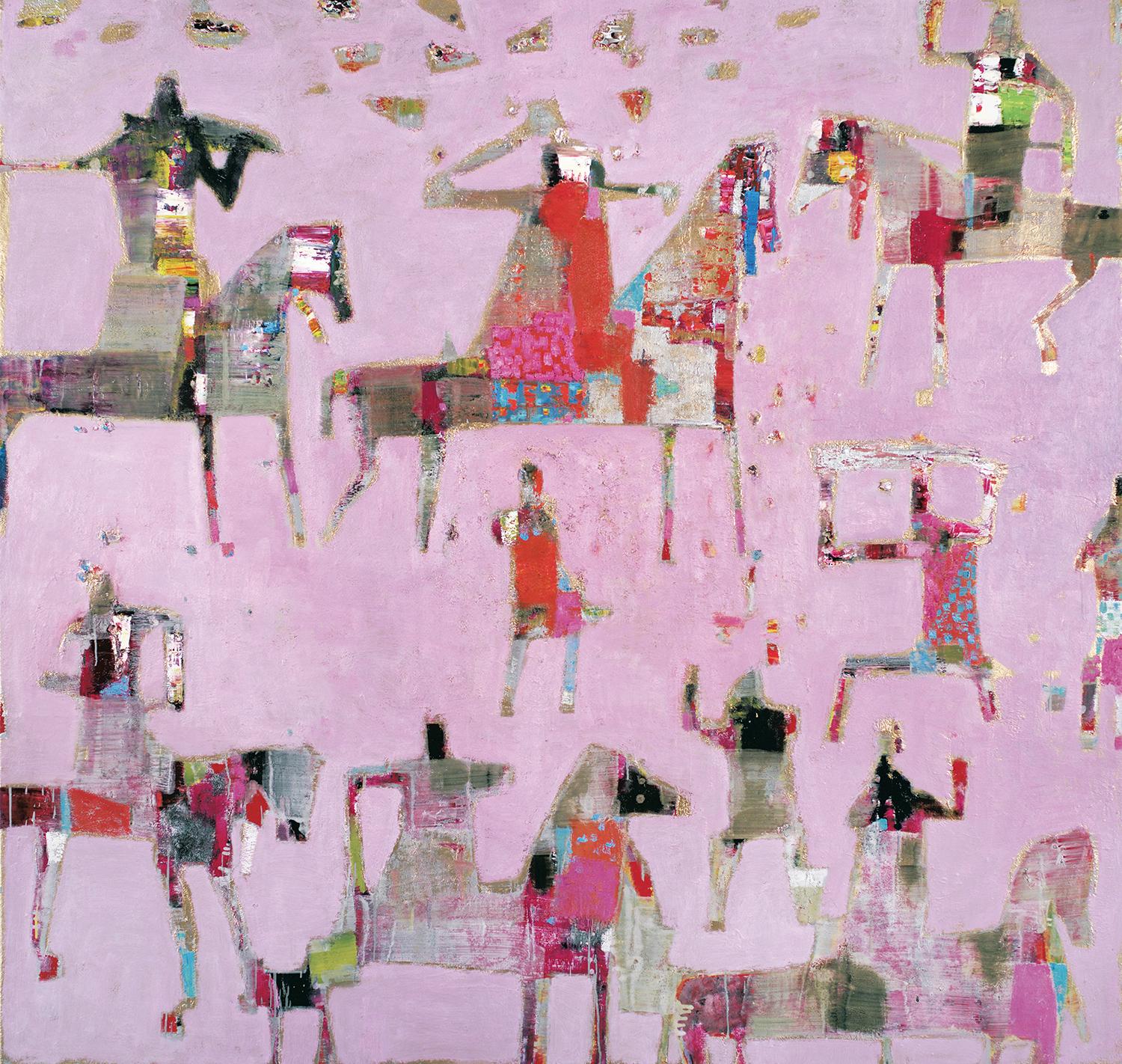
On this point, Heller says, “For artists that are well-known and in the secondary market, it is very important to check the provenance or auction records. If the artist has passed away, provenance is key, along with a catalog raisonne, literature, and/or exhibition history. Or the certification of an expert on the artist. Certificates of authenticity are very important for artists who are no longer living. If the artist is very well-known, the probability of fakes coming into the market is very high. So provenance and certifications are of the utmost importance. Most estates issue certificates of authenticity.”
Beyond provenance documents and certificates of authenticity, Khair recommends taking detailed notes about the purchase, why you bought it, what it made you feel, and the story of your relationship with the artist if there is one. “It is a way of archiving the works. Anything you leave behind without a story is just a painting with a price tag,” she explains.
When discussing the pitfalls that new art collectors make, Heller dispenses some sage advice: “Some collectors will follow trends too much and not collect what they truly love. You have to trust yourself and your eye, while also making sure to stay educated and up to date. Purchasing works that are fads or trends will never be a good investment in the long run. The re-sell for these artists down the line is always very difficult.” Pop and street art are often victims of said art trends, and even if they are your first love, should be purchased only after you have done your due diligence on the artist.
There are also multiple ways to own a piece of art rather than buying it directly from a gallery or auction house. There is a term called “partial ownership” where people can buy fractional ownership of a piece. Once it is sold, they get the profit based on their investment. Art funds also allow groups to go in on major masterpieces, but these pieces are often held for clients for five to seven years and are much bigger and more long-term investments. Finally, you can always bring together a group of friends and split the cost of a piece of art and rotate who gets to hang it in their home between the group. “I know some siblings that invest $50,000 apiece to buy different artworks every year, and then they share them,” Fuchs shares anecdotally.
Now if you’ve gotten this far and are interested in becoming an art collector, you’re in luck. The Middle East is a treasure trove of incredible galleries and art fairs, and there is already a huge community of collectors here for you to network with. Heller recommends checking out Art Dubai, Art Dubai Editions, and Abu Dhabi Art when they come around, and Fuchs recommends seeking out AlUla and Diriyah Biennale in Saudi Arabia. “Artists are constant commentators,” Fuchs enthuses. “Their role is to move us. What is happening in the Middle East art scene is a reflection of the region’s growth and potential. It is an exciting time to become a collector.” If you want to explore some options online, SaatchiArt.com, Artsy.net, and Arnet.com are both reputable platforms. Finally, Khair advises the following: “If you are going to collect art, it should come from a place of real passion. You will spend a lot of time with that art; you might see it every day. It should speak to you on a deep level. And if you ever happen to sell it and make a little money off of it, that’s just a bonus.”







